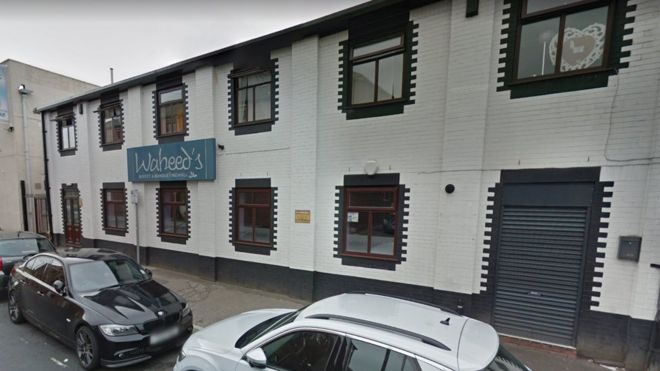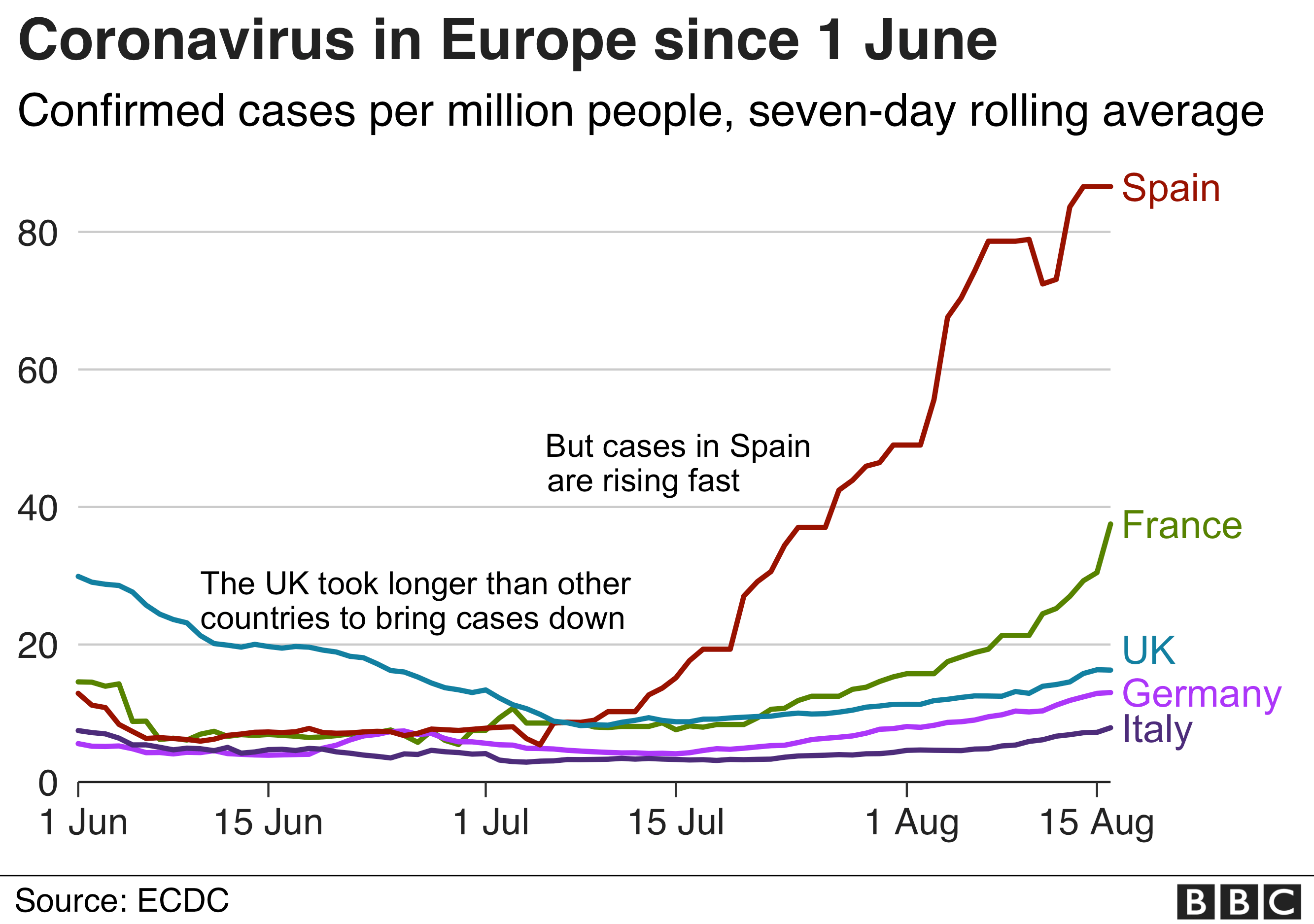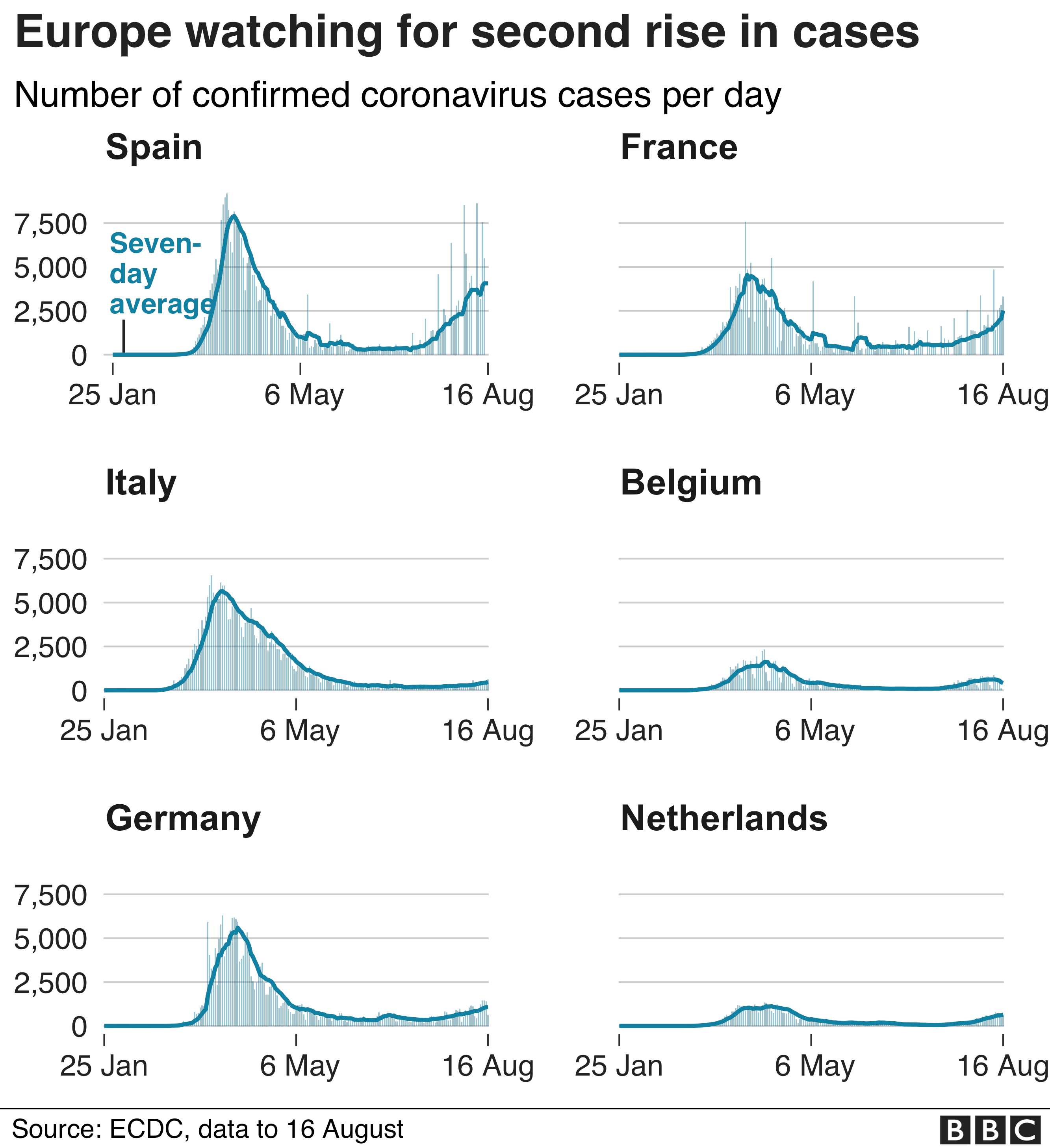Some good news?
Coronavirus cases stable across most of EnglandCoronavirus cases across England appear to be levelling off, despite flare-ups in local hotspots, according to estimates from the Office for National Statistics (ONS).
An estimated 1 in 1,900, or 28,300 people in England currently have the virus.
The ONS said evidence of a "small increase" people testing positive in July has now stabilised.
It has been regularly testing people in private households since April.
The ONS survey provides a consistent picture of what's been happening, because it regularly tests a large group of people - whether they have symptoms or not.
That means any changes are down to fewer or more infections, not just because more testing is taking place.
In areas where there have been spikes, more testing takes place.
Looking at the government's figures, this can make it look like cases are rising, when in fact more are simply being uncovered.
On the other hand, the relatively small number of people involved in the survey means the conclusions are based on 58 positive tests out of 122,000 swabs in the past six weeks.
But the ONS takes this uncertainty into account and even, with a margin of error, believes cases are levelling off.
Symptom check
The Covid Symptom Study app run by company ZOE and researchers at King's College London shows a similar picture.
It estimates 22,702 people currently have symptomatic Covid in the UK.
Symptom study figures. which are slightly more up to date than ONS figures, also show a rise in cases in July which then tailed off and have since fallen.
The government's figures on "confirmed cases" - which just look at positive tests, but don't adjust for more tests being done - look like cases are rising.
But there hasn't, yet, been a corresponding rise in hospitalisations or deaths.
https://www.bbc.co.uk/news/health-53781140Posted at 14:51
UK R number remains 0.8-1.0The UK's estimated R number is unchanged at 0.8 to 1.0, according to the government.
The R number - the rate at which a person with the virus passes it on to another person - has been a key measure by which ministers have rated the UK's ability to ease lockdown restrictions.
Keeping it below 1 means infections steadily decrease.
The UK's latest growth rate range is -4% to -1% per day.
Speaking earlier, Transport Secretary Grant Shapps said there was only so much "R budget" for opening up society without risking the number rising above 1.
https://www.bbc.co.uk/news/live/world-53775682I'm not totally convinced myself though.
What the reports are saying in a nutshell is that generally speaking the virus isn't
spreading faster than it has been doing recently.
Without question more people have
caught the virus but that's been confined within areas rather than across the country.
The daily figures (which for the second time this week were not published due to some reporting issue (?)) had been showing a general increase across a lot of the country but with a worrying growth in some specific areas - Slough for instance was 2 per 100,000 people on a seven day average just three weeks ago, 23rd July and ranked 240 out of 315 in the country but on the last known daily figures available (Monday 10th) had jumped over 200 places to 28th place with 18.1 per 100,000 and there have been 13 other positives to be added for Tuesday and Wednesday (there were only 3 in total for the whole week on the 23rd July!) and Thursday total was not announced and we await todays. Slough is a family and friends transmission.
Northampton however have had 300 positives from a workplace spread in the last few days -
https://www.bbc.co.uk/news/uk-england-northamptonshire-53762233Like it or not people do travel from lockdown areas across the country and I think it is inevitable that the virus will continue to be spread into areas that have up to now been relatively free of the virus.
I imagine if it does kick off again in London then more stringent controls will be enacted.
I guess the next hurdle to be faced soon though is kids going back to school - and how that will effect transmissions.

 Home
Home





